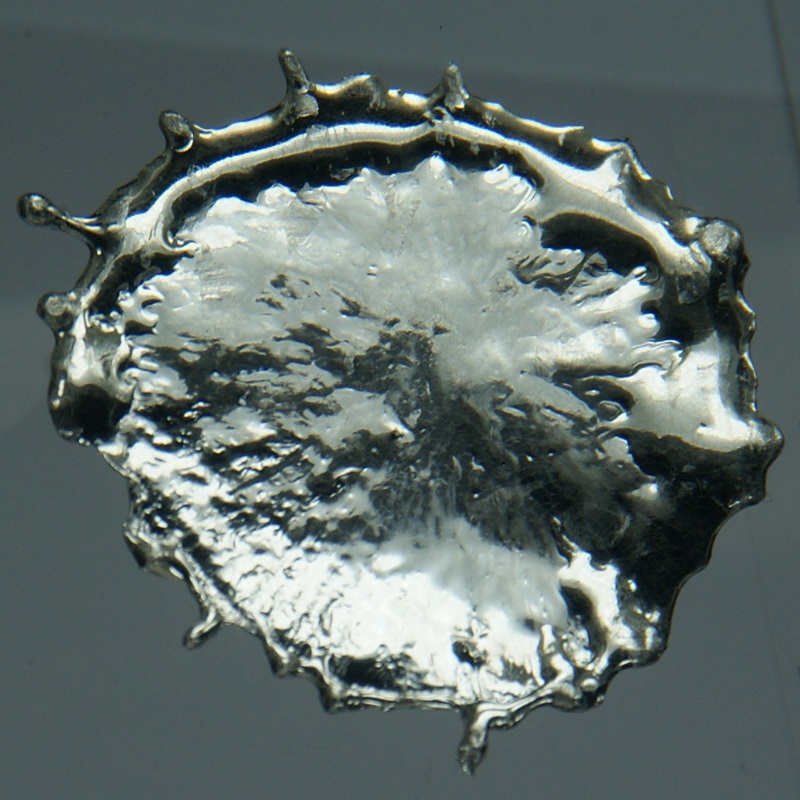Kositer
50
Sn
Skupina
14
Perioda
5
Blok
p
Protoni
Elektroni
Nevtroni
50
50
69
Splošne lastnosti
Vrstno število
50
Atomska teža
118,71
Masno število
119
Kategorija
Šibke kovine
Barva
Srebrna
Radioaktivno
Ne
The Latin word for tin is stannum
Kristalna struktura
Telesno centrirana tetragonalna
Zgodovina
Tin was first smelted in combination with copper around 3500 BC to produce bronze.
The oldest artifacts date from around 2000 BC.
Cassiterite, the tin oxide form of tin, was most likely the original source of tin in ancient times.
British scientist Robert Boyle published a description of his experiments on the oxidation of tin in 1673.
The oldest artifacts date from around 2000 BC.
Cassiterite, the tin oxide form of tin, was most likely the original source of tin in ancient times.
British scientist Robert Boyle published a description of his experiments on the oxidation of tin in 1673.
Elektroni po lupinah
2, 8, 18, 18, 4
Razporeditev elektronov
[Kr] 4d10 5s2 5p2
When a bar of tin is bent, a crackling sound known as the tin cry can be heard
Fizikalne lastnosti
Faza snovi
Trdnina
Gostota
7,287 g/cm3
Tališče
505,08 K | 231,93 °C | 449,47 °F
Vrelišče
2875,15 K | 2602 °C | 4715,6 °F
Talilna toplota
7 kJ/mol
Izparilna toplota
290 kJ/mol
Toplotna kapaciteta
0,228 J/g·K
Zastopanost v Zemljini skorji
0,00022%
Zastopanost v vesolju
4×10-7%

CAS številka
7440-31-5
PubChem CID številka
5352426
Atomske lastnosti
Atomski polmer
140 pm
Kovalentni polmer
139 pm
Elektronegativnost
1,96 (Paulingova lestvica)
Ionizacijski potencial
7,3439 eV
Atomski volumen
16,3 cm3/mol
Toplotna prevodnost
0,666 W/cm·K
Oksidacijska stanja
-4, 2, 4
Uporabe
Tin is used as a coating on the surface of other metals to prevent corrosion.
It has long been used as a solder in the form of an alloy with lead.
Tin salts sprayed onto glass are used to produce electrically conductive coatings.
Tin chloride is used as a mordant in dyeing textiles and for increasing the weight of silk.
It has long been used as a solder in the form of an alloy with lead.
Tin salts sprayed onto glass are used to produce electrically conductive coatings.
Tin chloride is used as a mordant in dyeing textiles and for increasing the weight of silk.
Tin is considered to be non-toxic but most tin salts are toxic
Izotopi
Stabilni izotopi
112Sn, 114Sn, 115Sn, 116Sn, 117Sn, 118Sn, 119Sn, 120Sn, 122Sn, 124SnNestabilni izotopi
99Sn, 100Sn, 101Sn, 102Sn, 103Sn, 104Sn, 105Sn, 106Sn, 107Sn, 108Sn, 109Sn, 110Sn, 111Sn, 113Sn, 121Sn, 123Sn, 125Sn, 126Sn, 127Sn, 128Sn, 129Sn, 130Sn, 131Sn, 132Sn, 133Sn, 134Sn, 135Sn, 136Sn, 137Sn